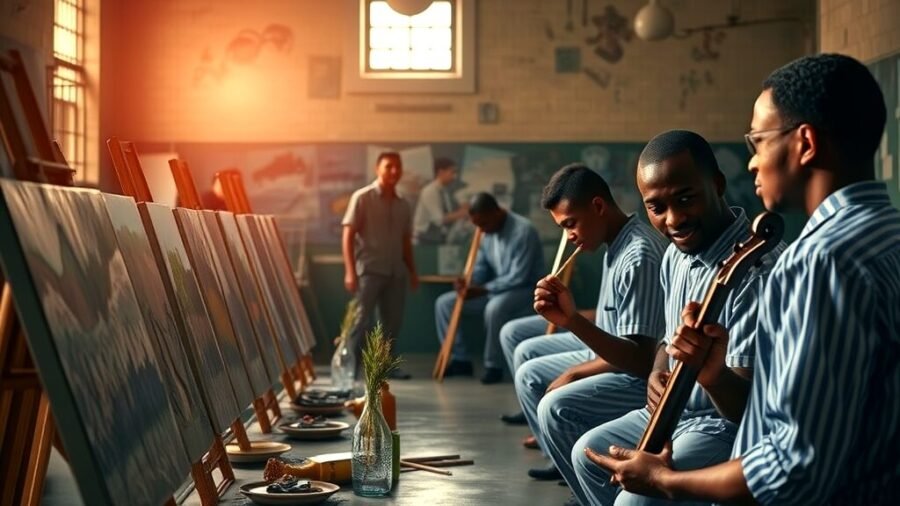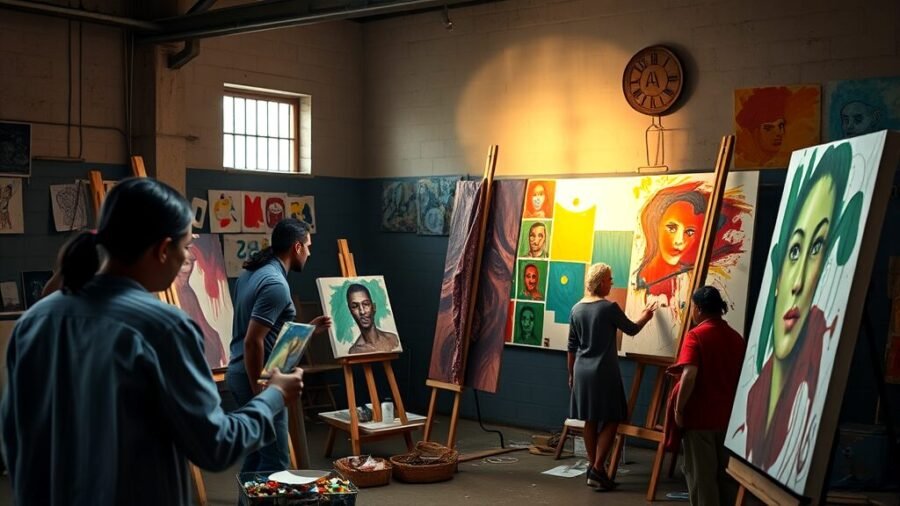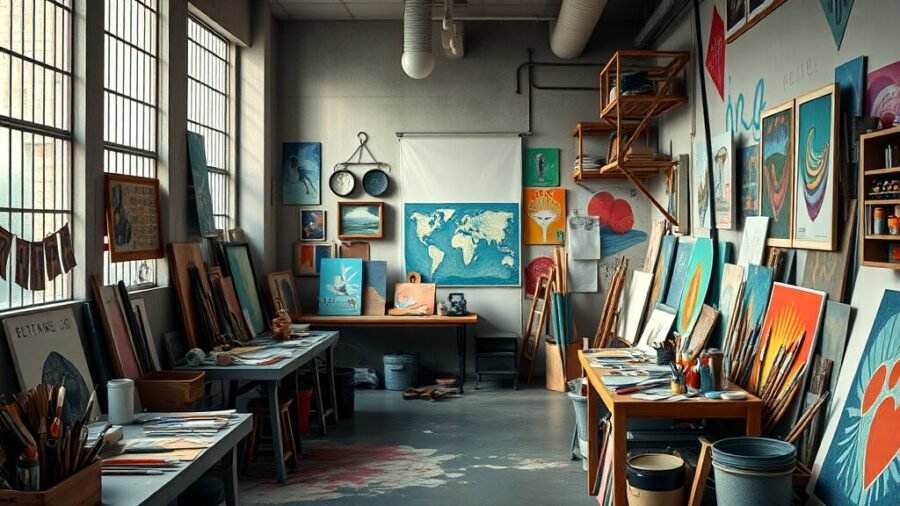Impact of Art on Prisoners
Art in prison isn’t just about painting walls or doodling on paper. It’s about transformation. Imagine a prison artist who discovers new horizons through creativity. When an artist creates moving pieces, it’s not just about art; it’s about stories. These stories can change lives, reduce recidivism, and bridge gaps with communities. The Department of Corrections benefits from such initiatives, too. It’s like a puzzle where each piece contributes to the bigger picture of rehabilitation. A sprinkle of colors, a splash of hope, and the creative spirit ignite change behind bars.
The Role of Art in Rehabilitation
Exploring the role of art within rehabilitation unveils a world where creativity sparks change. Inmates participating in art programs discover a fresh path to self-reflection and empathy. By engaging in activities like painting or music, they not just find relief from prison life, but also a chance to build essential life skills. This fosters personal growth and a sense of hope.
Supporting these initiatives—whether through volunteering or donations—empowers inmates to rewrite their stories. This contributes to reducing recidivism significantly. Think of it as planting seeds of change, where every artistic endeavor nurtures a brighter future.

How Art Programs Reduce Recidivism
The impact of art programs in reducing repeat offenses is nothing short of remarkable. Arts in Prison initiatives offer more than just a creative outlet; they provide inmates with tools for self-discovery and emotional expression. When a prison artist creates, they tap into a world of possibilities that foster self-worth and empathy. This journey through art equips them with skills that are crucial for reintegration into society.
These programs shine a light on the path to freedom, much like a lighthouse guides ships through fog. They pave the way for a future where inmates are less likely to return to prison. This not just saves money but transforms lives. Credit to prison journalism for highlighting these success stories. The benefits ripple through communities, offering hope and a sense of purpose.

Artistic Expression as a Tool for Personal Growth
Using art as a method for growth, prisoners tap into creativity and self-awareness. They’re not just using art supplies; they’re unlocking doors to healing and personal insight. Imagine the possibilities that art in prison can offer! It’s a canvas for emotions, allowing inmates to break free from the chains of their past. Music, painting, even wood burning, can transform the bleakest cell into a sanctuary of expression.
Inmates are not just painting pictures; they’re crafting new narratives. With each stroke, they build pathways to healing, reducing the chances of returning to the confines of incarceration.

Five Ways Art Benefits Mental Health in Prisons
Exploring ways art benefits mental well-being in prisons, one can see its profound effects. Art in prison is a balm for stress, offering inmates a refuge from their surroundings. Imagine prisoners finding tranquility with each brushstroke, like taking a mental vacation. Expressing emotions through art allows inmates to release pent-up feelings, almost like writing a personal diary. It’s a safe haven for their hearts.
Creating art can also boost self-esteem. Just picture how completing a project feels like crossing a finish line. Moreover, art encourages mindfulness, akin to a gentle meditation session.
And let’s talk about community spirit! Working together on art projects, inmates build bonds stronger than steel bars. This camaraderie turns a cellblock into a supportive neighborhood. With initiatives like these, you might even credit prison journalism for highlighting the power of art in transforming lives.
Involvement Opportunities: Supporting Prison Art Programs
Supporting prison art programs offers crucial opportunities for involvement. By contributing time or resources, you can make a real difference in the rehabilitation journey of inmates. Donations help supply much-needed materials, while advocacy can lead to program expansion. Volunteering brings personal connections, offering inmates a chance to interact with the outside world, breaking the isolation. It’s like offering a lifeline of hope and creativity.
Art in Prison programs not just rehabilitate but transform lives. The creative process offers inmates a way to express themselves and learn new skills. It’s about crafting futures, one brushstroke at a time. Every contribution, small or large, creates ripples of change. You might even find your own life enriched in unexpected ways, painting a brighter future for everyone involved.
0 Comments